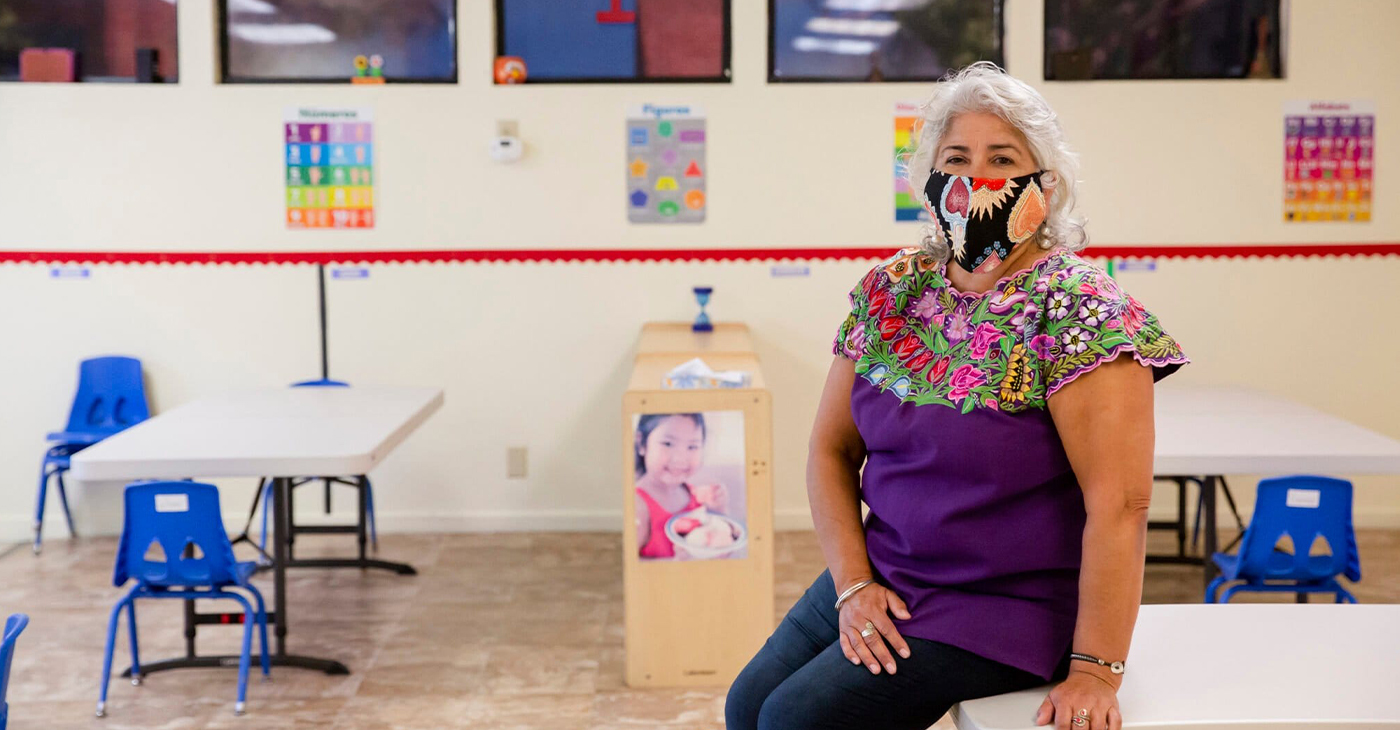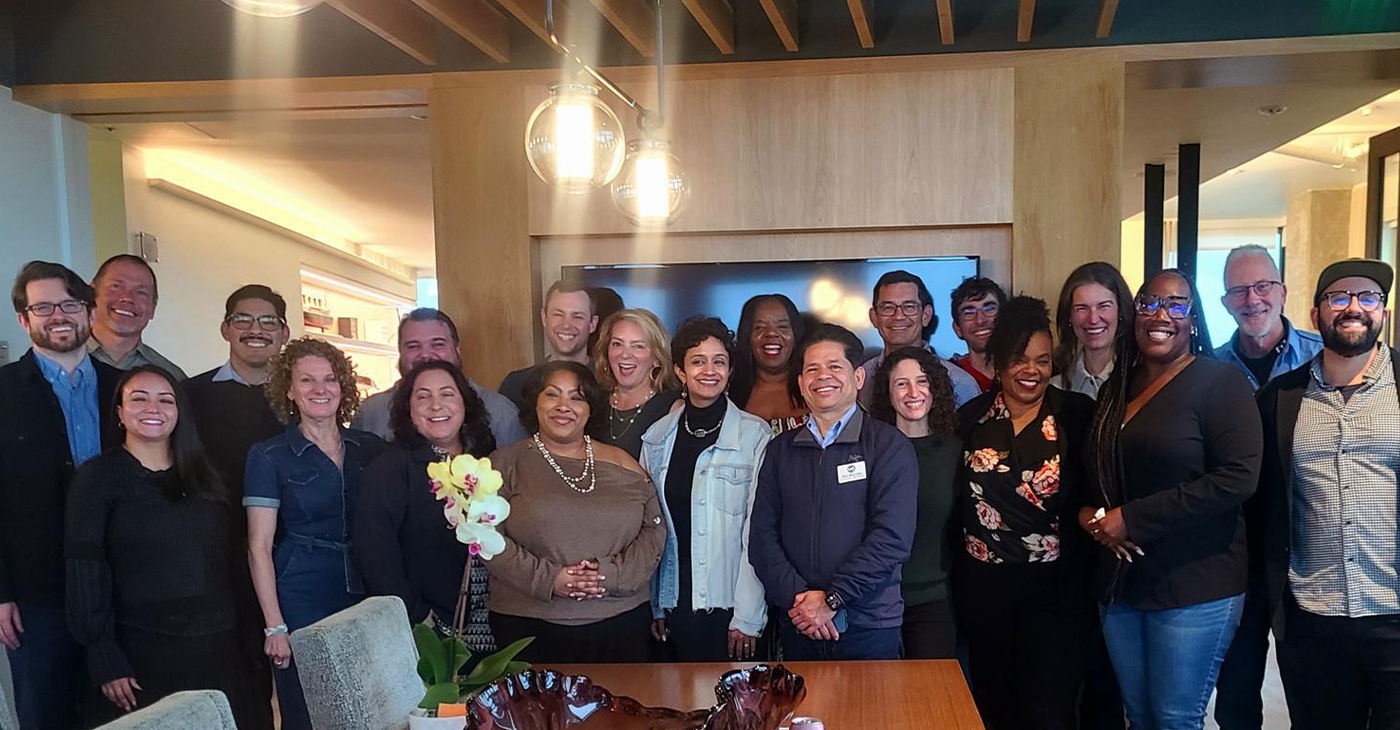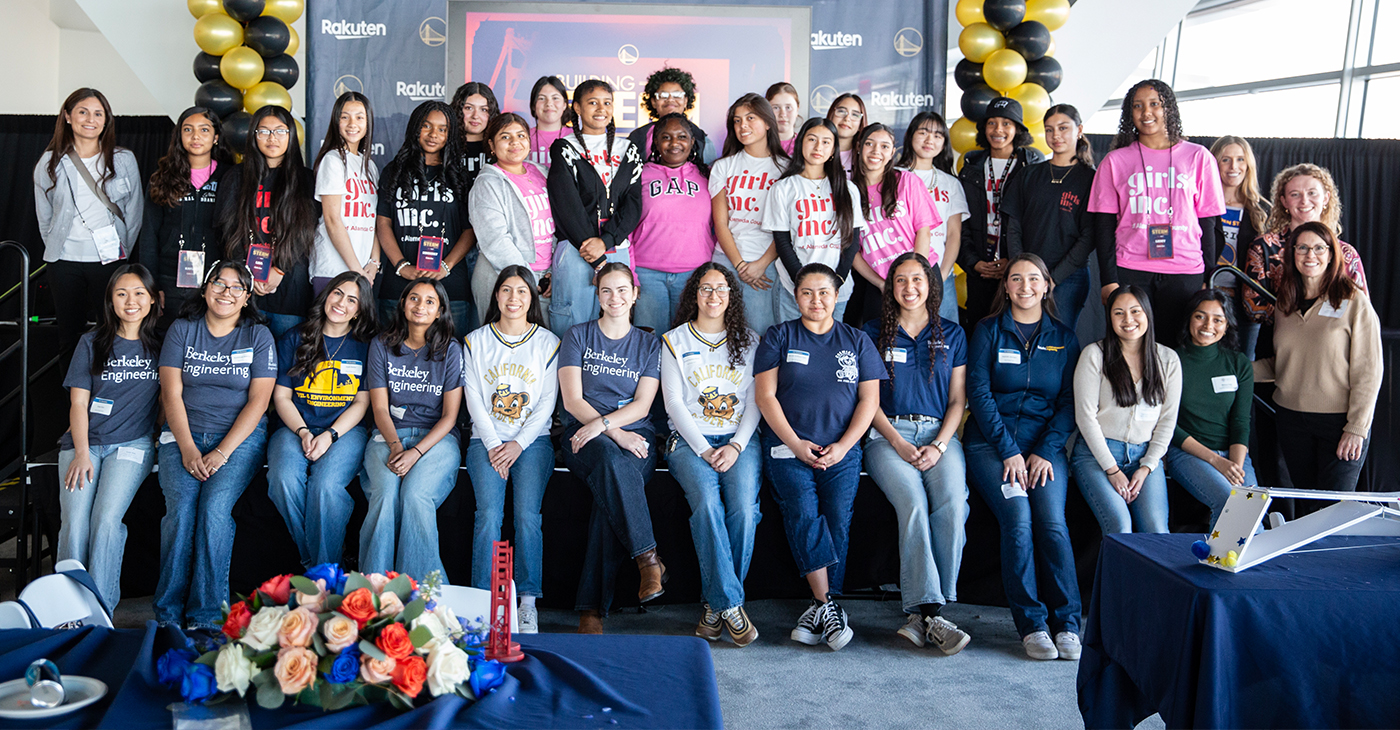Education
Students get scholarships, acceptance letters at Black College Expo
WAVE NEWSPAPERS — More than 15,000 high school students met with representatives from more than 200 colleges and universities.
LOS ANGELES — Students from Riverside, San Diego and Orange County made their way to the Los Angeles Convention Center Feb. 2 for the 20th annual Black College Expo.
More than 15,000 high school students met with representatives from more than 200 colleges and universities including Ivy League schools and historically black colleges and universities (HBCUs) from across the country.
“The Expo started as a dream and a passion of mine,” said Theresa Price, founder of the expo who said that years ago, she was not aware that HCBUs even existed.
“Once I discovered historically black colleges and universities, I wanted to spread the history and legacy of these great schools,” she said. “It is great to see the students so happy and excited to attend the expo and I wanted students from all over the world to know about it.”
Some schools were able to check high school transcripts of students at the expo and hand out acceptance letters on the spot.
During a seminar titled “How to Get Money for College,” Gloria Ponce Rodriguez of the National College Resources Foundation said that there are billions of dollars available for high school students who want to attend colleges and universities, particularly if they come from impoverished backgrounds.
“There are all kinds of resources and money out there, especially for the African-American male,” she said while distributing a brochure filled with information about how to receive money for college.
“There’s state, federal, institutional and private scholarships available,” she added.
“If you’re currently enrolled in ROTC at your school, ROTC money is available. If you want to become a teacher, you can get a teaching grant as long as your grade point average is 3.2.”
“If your family makes less than $65,000 a year, you can go to Harvard, Princeton or Yale. There are also the Supplemental Education Opportunity Grant and the Pell grant, which offers students $6,095 in free money as well as schools that also offer work-study programs,” Rodriguez said.
“If a student really wants to go to college, the opportunities are definitely there,” Rodriguez said. “There are at least 80 colleges across the country that will offer you a pathway to acquiring an education, particularly if you come from a disadvantaged background.”
Rodriguez shared her own story, revealing that she only had a 1.1 grade average when she dropped out of high school to care for her six siblings.
“But I knew I was a smart cookie,” she said. “I finally went back to school and earned my GED.”
Rodriguez applied for and was accepted at Norfolk State College in Norfolk, Virginia. “After improving my grade point average, I received a full fellowship and majored in special education. I pursued my degree while I raised my special needs child,” said Rodriguez, who eventually became the admissions director at Norfolk.
“Don’t ever give up,” she told the students.
During the day-long event, a number of speakers who had attended HBCUs said that they formed close bonds with their alma maters that will last forever.
“I visited the University of Southern California and no one was going the extra mile to interact with Jawanza Harris,” said one speaker. “But when I went to Clark Atlanta University in Atlanta, Georgia they said, ‘You’re great. We see something in you.’ The difference is your people surround you and affirm you,” he said.
“At HBCUs, they teach you about the rich legacy of African Americans that are not in the history books,” Harris added. “My HBCU experience taught me that there are great black people all around us.”
Amer Walton, who attended Bowie State College in Prince Georges County, Maryland, agreed.
“Most of your lawyers, doctors and judges graduated from HBCUs,” Walton said. “HBCUs help you to maximize your potential.”
Dozens of students flocked to a booth to pick up literature from Black College Tours, which was founded 30 years ago by Gregory and Yasmin Delahoussaye. The tour arranges for high school students to visit different colleges across the country each summer.
“I realized that young people would have a better chance to go to college if they knew that HBCUs existed,” said Gregory Delahoussaye, who estimated that nearly 5,000 students have taken the tour.
Seventeen-year-old Da’Shawn Lennan eagerly handed out literature detailing information about Miles College, an HBCU in Fairfield, Alabama.
“When I was still attending Pete Knight High School in Palmdale, I visited Miles College and they had the major I wanted, which was business,” said Lennan, who applied to Miles and was accepted at the school.
“I am so glad to see young people attending this expo,” said Lennan as he surveyed the crowd. “This is a great opportunity for seniors and juniors from high school to get acquainted with different schools from across the country.”
Eighteen-year-old Prosper Egbador, a student at Aquinas High School in San Bernardino who emigrated from Nigeria at 16, proudly walked away with an acceptance letter from Paul Quinn College in Dallas, Texas.
“It feels great to be accepted — this is a dream come true. Not a lot of people get this opportunity, but God helped me, and here I am — I’m going to college,” he said, eagerly clutching his acceptance letter.
Brandon Lee said that after checking his high school transcripts, admission personnel at Tuskeegee University in Tuskeegee, Alabama, also offered him an acceptance letter.
“I want to major in mechanical engineering,” said Lee, who traveled from San Gorgonio Hugh School in San Bernardino, to attend the expo. “I’m really looking forward to the atmosphere, culture and climate at Tuskeegee.”
Towards the end of the Expo, 25 high school students were led to the stage and presented with scholarships ranging from $250 to $2,500. They were greeted with loud applause from the audience.
“In order to win a scholarship, the students had to write an essay about why they wanted to go to college,” Price said.
Nicole Tinson, a speaker at the “Boom Careers” workshop, told the students, “Don’t be discouraged. You can have a 2.0 [grade point average] but you can recreate your grade point average. There’s lots of opportunities, internships, jobs and resources out there. You just have to make a plan and apply yourself.”
This article originally appeared in the Wave Newspapers.
Bay Area
Five Years After COVID-19 Began, a Struggling Child Care Workforce Faces New Threats
Five years ago, as COVID-19 lockdowns and school closures began, most early educators continued to work in person, risking their own health and that of their families. “Early educators were called essential, but they weren’t provided with the personal protective equipment they needed to stay safe,” said CSCCE Executive Director Lea Austin. “There were no special shopping hours or ways for them to access safety materials in those early and scary months of the pandemic, leaving them to compete with other shoppers. One state even advised them to wear trash bags if they couldn’t find PPE.”

UC Berkeley News
In the first eight months of the COVID-19 pandemic alone, 166,000 childcare jobs were lost across the nation. Significant recovery didn’t begin until the advent of American Rescue Plan Act (ARPA) Child Care Stabilization funds in April 2021.
Today, child care employment is back to slightly above pre-pandemic levels, but job growth has remained sluggish at 1.4% since ARPA funding allocations ended in October 2023, according to analysis by the Center for the Study of Child Care Employment (CSCCE) at UC Berkeley. In the last six months, childcare employment has hovered around 1.1 million.
Yet more than two million American parents report job changes due to problems accessing child care. Why does the childcare sector continue to face a workforce crisis that has predated the pandemic? Inadequate compensation drives high turnover rates and workforce shortages that predate the pandemic. Early childhood educators are skilled professionals; many have more than 15 years of experience and a college degree, but their compensation does not reflect their expertise. The national median hourly wage is $13.07, and only a small proportion of early educators receive benefits.
And now a new round of challenges is about to hit childcare. The low wages paid in early care and education result in 43% of early educator families depending on at least one public support program, such as Medicaid or food stamps, both of which are threatened by potential federal funding cuts. Job numbers will likely fall as many early childhood educators need to find jobs with healthcare benefits or better pay.
In addition, one in five child care workers are immigrants, and executive orders driving deportation and ICE raids will further devastate the entire early care and education system. These stresses are part of the historical lack of respect the workforce faces, despite all they contribute to children, families, and the economy.
Five years ago, as COVID-19 lockdowns and school closures began, most early educators continued to work in person, risking their own health and that of their families. “Early educators were called essential, but they weren’t provided with the personal protective equipment they needed to stay safe,” said CSCCE Executive Director Lea Austin. “There were no special shopping hours or ways for them to access safety materials in those early and scary months of the pandemic, leaving them to compete with other shoppers. One state even advised them to wear trash bags if they couldn’t find PPE.”
The economic impact was equally dire. Even as many providers tried to remain open to ensure their financial security, the combination of higher costs to meet safety protocols and lower revenue from fewer children enrolled led to job losses, increased debt, and program closures.
Eventually, the federal government responded with historic short-term investments through ARPA, which stabilized childcare programs. These funds provided money to increase pay or provide financial relief to early educators to improve their income and well-being. The childcare sector began to slowly recover. Larger job gains were made in 2022 and 2023, and as of November 2023, national job numbers had slightly surpassed pre-pandemic levels, though state and metro areas continued to fluctuate.
Many states have continued to support the workforce after ARPA funding expired in late 2024. In Maine, a salary supplement initiative has provided monthly stipends of $240-$540 to educators working in licensed home- or center-based care, based on education and experience, making it one of the nation’s leaders in its support of early educators. Early educators say the program has enabled them to raise wages, which has improved staff retention. Yet now, Governor Janet Mills is considering cutting the stipend program in half.
“History shows that once an emergency is perceived to have passed, public funding that supports the early care and education workforce is pulled,” says Austin. “You can’t build a stable childcare workforce and system without consistent public investment and respect for all that early educators contribute.”
The Center for the Study of Childcare Employment is the source of this story.
Activism
District Delegates to State Democratic Party Central Committee Meeting Celebrate Election Victory
Delegates and elected officials were excited for the future of the Democratic Party and making its focus on 1) creating more affordable housing, 2) supporting education, 3) helping working families, and 4) protecting the environment and addressing climate change, with a focus on practical and realistic policy efforts that could have a meaningful impact.

By Ben Gould
Special to The Post
Winners of the February 2025 Assembly District Election Meetings (ADEM) for Assembly Districts 14 and 18 met on Sunday, March 16 to discuss priorities for the California Democratic Party convention in Anaheim coming up in May.
The winners for Assembly District 18 are Genice Jacobs, Bobbi Lopez, Shawn Danino, Ben Gould, Zac Bowling, Nate Hanson, Cathy Adams, Sam Gould, Lauren Wilson, Ashlee Jemmott, and former Oakland School Board Director Sam Davis.
The winners for Assembly District 14 are: Sarah Bell, Neil Tsutsui, Hercules Councilmember Dilli Bhattarai, former Berkeley School Board Director Laura Babitt, former Piedmont Mayor Teddy Gray King, and former Albany Mayor Nick Pilch.
They were joined by Oakland Councilmember Janani Ramachandran, Emeryville Councilmember Courtney Welch, and BART Director Victor Flores to help celebrate their victory.
Delegates and elected officials were excited for the future of the Democratic Party and making its focus on 1) creating more affordable housing, 2) supporting education, 3) helping working families, and 4) protecting the environment and addressing climate change, with a focus on practical and realistic policy efforts that could have a meaningful impact.
Activism
Golden State Warriors Program Is Inspiring Next Generation of Female Engineers
Breaking down barriers and biases that deter young girls from pursuing STEAM subjects is essential for creating a level playing field and ensuring equal opportunities for all. By challenging stereotypes and promoting a culture of inclusivity and diversity in STEAM fields, experts believe young girls can be empowered to pursue their interests and aspirations without limitations confidently. Encouraging mentorship, providing access to resources, and celebrating girls’ achievements in STEAM are all crucial steps in creating a supportive environment that fosters success.

By Y’Anad Burrell
The Golden State Warriors and e-commerce giant Rakuten are joining forces to inspire the next generation of female engineers through Building STEAM Futures, part of The City Calls campaign.
Organizers say the initiative is founded on the idea that science, technology, engineering, arts, and mathematics (STEAM) are crucial fields for innovation and progress, and empowering young girls to pursue careers in these areas is more important than ever. Studies consistently show that girls are underrepresented in STEAM fields, resulting in a gender disparity that limits potential and hinders diversity.
Breaking down barriers and biases that deter young girls from pursuing STEAM subjects is essential for creating a level playing field and ensuring equal opportunities for all. By challenging stereotypes and promoting a culture of inclusivity and diversity in STEAM fields, experts believe young girls can be empowered to pursue their interests and aspirations without limitations confidently. Encouraging mentorship, providing access to resources, and celebrating girls’ achievements in STEAM are all crucial steps in creating a supportive environment that fosters success.
On Saturday, March 8, International Women’s Day, the Warriors and Rakuten hosted 20 middle school girls from Girls Inc. of Alameda County at Chase Center’s Above the Rim for a hands-on bridge-building experience. The young girls from Girls, Inc. of Alameda County had an opportunity to design, build and test their own bridge prototypes and learn the fundamentals of bridge construction from the Engineering Alliance and the UC Berkeley Steel Bridge Team.
This STEAM experience for the girls followed the first session in January, where they took a behind-the-scenes tour of the Golden Gate Bridge, learning about its design and construction from industry experts. The City Calls campaign, tipped off with the unveiling the Warriors’ new bridge-themed City Edition jerseys and court design earlier this year.
-

 Activism4 weeks ago
Activism4 weeks agoUndocumented Workers Are Struggling to Feed Themselves. Slashed Budgets and New Immigration Policies Bring Fresh Challenges
-

 Activism2 weeks ago
Activism2 weeks agoWe Fought on Opposite Sides of the Sheng Thao Recall. Here’s Why We’re Uniting Behind Barbara Lee for Oakland Mayor
-

 Activism4 weeks ago
Activism4 weeks agoOakland Post: Week of March 5 – 11, 2025
-

 #NNPA BlackPress2 weeks ago
#NNPA BlackPress2 weeks agoRev. Dr. Jamal Bryant’s Black Church Target Boycott Mobilizes 150,000
-

 Activism2 weeks ago
Activism2 weeks agoSan Francisco Is Investing Millions to Address Food Insecurity. Is Oakland Doing the Same?
-

 #NNPA BlackPress4 weeks ago
#NNPA BlackPress4 weeks agoTrump Moves to Dismantle Education Department
-

 #NNPA BlackPress4 weeks ago
#NNPA BlackPress4 weeks agoFighting to Keep Blackness
-

 #NNPA BlackPress2 weeks ago
#NNPA BlackPress2 weeks agoRecently Approved Budget Plan Favors Wealthy, Slashes Aid to Low-Income Americans


























































